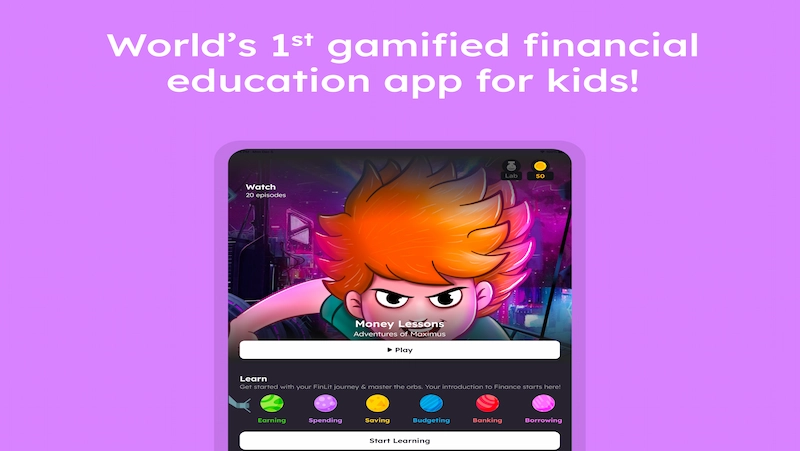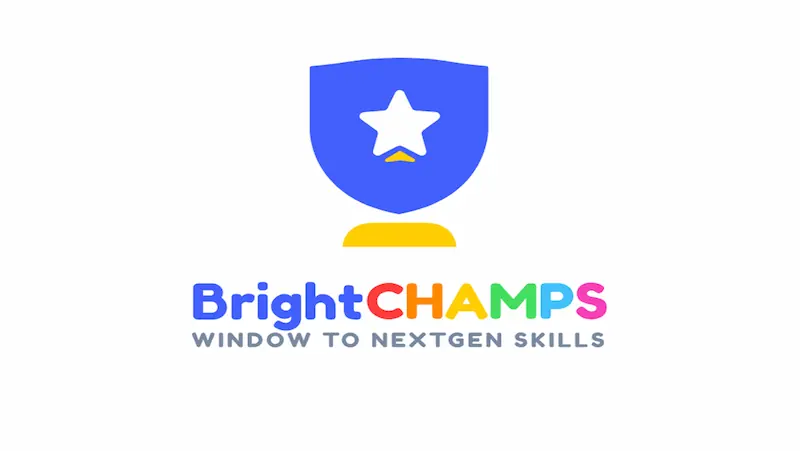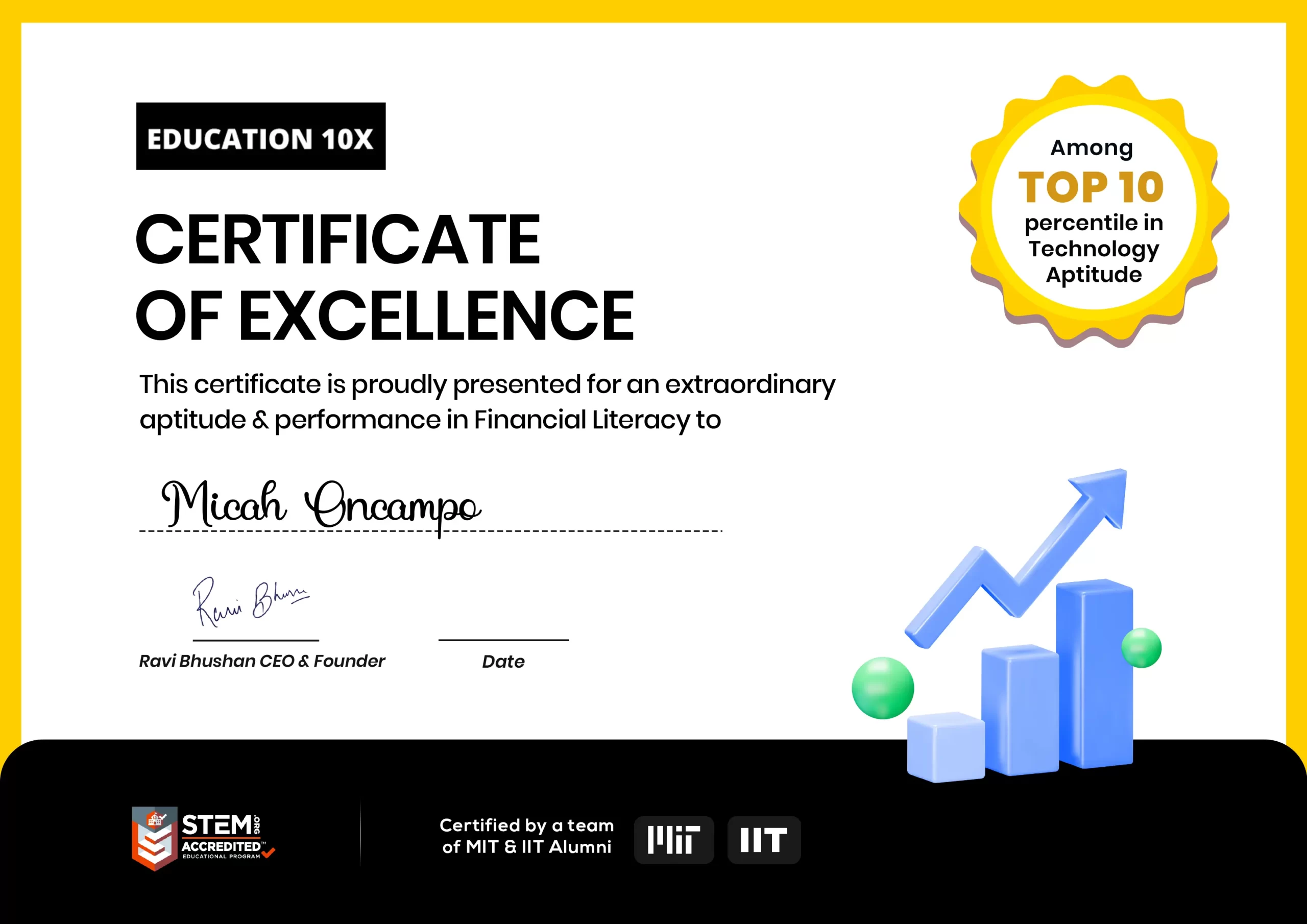Welcome, money-savvy parents, to a financial adventure like no other! Get ready to embark on a journey filled with piggy banks, dollar signs, and the thrill of turning little spenders into wise money managers. Today, we’re diving headfirst into the exciting world of teaching financial literacy to our curious, budding financial gurus—our beloved students.
Picture this: a future where your child doesn’t just see money as crumpled bills and shiny coins that magically appear from your wallet. No, no, we’re talking about a future where they grasp the true value of a dollar, the beauty of saving, and the secrets of growing their wealth. And guess who gets to be their financial guide, their money mentor, their financial fairy godparent? That’s right—you, the awesome parent!
Now, hold on to your pocketbooks and wallets as we unlock the treasure trove of tips and tricks to instill financial smarts in your young ones. We’ll be sharing insider secrets on how to weave financial education into their daily lives, making it as natural as their love for ice cream or video games. Trust us, you don’t need a degree in economics to pull this off—just a sprinkle of creativity, a dash of patience, and a pinch of laughter.
Together, we’ll explore the magical realms of budgeting, saving, and the power of delayed gratification. We’ll venture into the mysterious kingdom of investing and teach your kids to be the masters of compound interest. Oh, and don’t worry—we’ll even tackle the treacherous waters of responsible borrowing and online banking. We’ve got everything you need to arm your little ones with the knowledge and skills to conquer their financial future.
So, gather ’round, fellow parents, and let’s embark on this thrilling expedition into the world of teaching financial literacy to students. Prepare for smiles, aha moments, and the satisfaction of knowing that you’re setting your children up for a lifetime of financial success. Together, we’ll unleash their financial superpowers and watch them soar through life, armed with the wisdom and savvy of a seasoned money guru.
Before diving into the blog, check out this video below.
Are you ready to unlock the secrets of financial literacy for students and unleash the financial wizards within your children? Then let’s dive into this enchanting adventure of learning, growth, and lots and lots of money magic!
Table of contents
- Setting the Foundation
- Incorporating Financial Literacy into Everyday Life
- Learning About Earning and Spending
- Money Talks: Teaching the Value of Money – Needs vs. Wants
- Pennywise, Pound Foolish: Developing Wise Spending Habits
- Exploring Investing and Long-Term Planning
- Empowering Financial Independence: Nurturing Responsible Borrowing Skills
- Navigating the Digital World: Online Banking and Security Made Easy for Parents and Kids!
- Empowering Young Minds: Essential Learning Resources and Tools for Financial Literacy
- Nurturing Young Minds: Overcoming Challenges in Teaching Financial Literacy
- Conclusion
- Frequently Asked Questions (FAQs)
Setting the Foundation
Welcome, money-minded parents! Today, we’re laying the groundwork for our exciting journey into the realm of financial literacy for students. Buckle up and get ready to build a solid foundation that will set your little ones up for a lifetime of financial success. In this section, we’ll start by unraveling the mysteries of financial literacy, explore the incredible benefits of starting early, and highlight the crucial role parents play in developing their children’s financial skills. Let’s dive in!

Defining Financial Literacy: Unlocking the Money Code
Before we begin our adventure, let’s make sure we’re all speaking the same money language. Financial literacy is like the secret code to understanding money matters. It’s the magical ability to navigate the world of personal finance with confidence and wisdom. Think of it as a superpower that empowers individuals to make informed financial decisions, manage their money effectively, and reach their financial goals.
financial literacy for students isn’t just about knowing how to count coins or make a budget (though those are important too). It’s about understanding concepts like saving, investing, budgeting, and even the mystical world of credit and debt. By teaching our children financial literacy, we’re equipping them with the tools they need to make smart money choices throughout their lives.
Why Start Early: Unleashing the Benefits of Early Financial Education
Now, you might be wondering, “Why should we start teaching financial literacy to our little ones so early?” Well, prepare to be amazed by the incredible benefits that early financial education can bring!
a. Money Mindset Mastery: By introducing financial concepts at an early age, we help shape our children’s attitudes towards money. They develop a healthy relationship with money, understanding its value and the importance of responsible money management.
b. Building Lifelong Habits: Just like brushing their teeth or eating their veggies, financial habits are best formed early. By starting young, we have the golden opportunity to instill positive habits like saving, budgeting, and setting financial goals that will stick with our kids throughout their lives.
c. Smart Decision-Making Skills: Financial literacy isn’t just about numbers; it’s about making wise choices. Early financial education hones our children’s decision-making skills, teaching them to weigh options, consider consequences, and make informed financial choices that align with their goals.
d. Future Financial Independence: Picture your child confidently navigating the financial maze of adulthood, making smart financial decisions without breaking a sweat. That’s the power of starting early. By equipping them with financial literacy, we’re giving them the tools to achieve financial independence and thrive in an increasingly complex financial world.

The Role of Parents: Financial Champions in Action
Parents, rejoice! You are the unsung heroes of your children’s financial journey. You hold the power to mold their financial mindset, empower their financial decision-making, and ignite their financial curiosity. Here’s how you can step into your role as financial champions:
a. Lead by Example: Children are curious creatures, always observing and imitating their parents. Show them your own responsible money habits, involve them in financial discussions, and let them witness your smart financial choices. You are their ultimate role model!
b. Make Money Fun: Learning about money doesn’t have to be dull or intimidating. Infuse excitement into financial education by turning it into a game, creating challenges, or even starting a family money project. The more fun it is, the more engaged and eager your kids will be to learn.
c. Age-Appropriate Lessons: Remember to tailor your financial lessons to your child’s age and understanding. Break down complex concepts into bite-sized pieces and use relatable examples. As they grow older, you can gradually introduce more advanced topics.
Incorporating Financial Literacy into Everyday Life
Making Money Talks: Age-Appropriate Discussions about Finances
Money talks, but who said it has to be boring? As parents, we hold the power to transform financial conversations into captivating adventures that ignite our children’s curiosity and equip them with valuable life skills. So, gather ’round and let’s uncover the secrets to making money talks engaging and age-appropriate for our little money mavens.
For the younger ones, it all begins with storytelling. Yes, you heard that right! We can dive into the magical world of picture books that weave financial lessons into enchanting tales. From “The Money Tree” to “Alexander, Who Used to Be Rich Last Sunday,” these stories not only captivate their imaginations but also introduce basic concepts like earning, saving, and sharing.
As our kids grow older, it’s time to level up our money conversations. Let’s involve them in the family budgeting process. Gather around the kitchen table and make it a collaborative experience. Discuss the importance of managing expenses and setting financial goals as a family unit. Engage them in decision-making by letting them voice their opinions on how to allocate resources wisely. By involving them in real-life financial discussions, we’re giving them a sneak peek into the adult world while fostering their critical thinking and financial responsibility.
Teaching Budgeting and Saving
Ah, the magical realm of saving and budgeting for kids—where money meets mindfulness. This is where we lay the foundation for responsible financial habits that will serve our children well throughout their lives. But how do we make it fun, you ask? Fear not, for we have a few tricks up our sleeves.

Firstly, let’s bring out the piggy banks and jars! Encourage your little ones to allocate their money into different categories—savings, spending, and sharing. This hands-on approach not only teaches them the art of dividing their funds but also instills the joy of watching their savings grow, one shiny coin at a time. Celebrate their milestones, whether it’s reaching a savings goal or making a thoughtful donation to a cause they care about.
To level up the fun factor, consider creating a savings challenge or a family savings goal. Maybe it’s a special vacation, a new toy, or even a philanthropic endeavor. By making saving a team effort, you’ll foster a sense of camaraderie and make financial responsibility an exciting family adventure.
Introducing Basic Concepts of Banking and Saving Accounts
As our young money enthusiasts grow, it’s time to introduce them to the magical world of banking. But hold on! This doesn’t mean diving straight into complex financial jargon. We want to make it accessible and relatable, so let’s start with the basics.
Consider setting up a pretend bank at home, complete with play money, deposit slips, and a mini ATM. Teach your children how to deposit their earnings and simulate withdrawals when they need to make purchases. This hands-on experience lays the groundwork for understanding the role of banks, the concept of interest, and the importance of saving money in a secure place.
Additionally, take advantage of educational resources tailored for young minds. Online games, apps, and interactive websites can turn learning about banking and saving into an adventure. From virtual piggy banks to savings challenges, these tools provide a playful way to reinforce the concepts and ignite their interest in financial literacy.
Learning About Earning and Spending
Ahoy, parents! It’s time to ignite that entrepreneurial spark in your little ones and set sail on a thrilling voyage into the world of earning and spending. As we embark on this leg of our financial journey, we’ll unveil the secrets to nurturing future money magnets through entrepreneurship and part-time jobs. So, strap on your imagination caps and get ready for a whirlwind of money-making ideas!
Encouraging Entrepreneurship: Transforming Lemonade into Lemonade Empire
Who says lemonade stands are just for lazy summer afternoons? We’re turning them into mini-business boot camps! Encourage your kids to unleash their creativity and start their very own lemonade enterprise. Help them with brainstorming catchy names, designing eye-catching signs, and setting fair prices. This not only teaches them the basics of supply and demand but also instills the value of hard work, customer service, and financial responsibility. Who knows, their lemonade stand might just be the first step toward becoming the next big business mogul!
Part-Time Jobs: Turning Passion into Profit
Is your child passionate about animals? Suggest they offer pet-sitting or dog-walking services to neighbors and friends. Do they have a knack for arts and crafts? Encourage them to create handmade products to sell online or at local craft fairs. By supporting their interests and helping them explore part-time jobs related to their passions, you’re nurturing their entrepreneurial spirit and showing them that their hobbies can also be lucrative. These experiences will teach them the value of hard work, time management, and the joy of earning their own money.
Money Talks: Teaching the Value of Money – Needs vs. Wants

In a world of endless shopping options and irresistible advertisements, it’s essential to teach our children the difference between needs and wants. By doing so, we empower them to make thoughtful spending decisions and develop a healthy relationship with money. Here’s how we can guide them on this enlightening path:
1. Prioritizing Essentials: The “Needs” Reality Check
Start by discussing the basic needs we all have, such as food, shelter, clothing, and education. Explain to your children that these essentials are the pillars upon which financial decisions should be based. Engage them in conversations about how the family budget is allocated to fulfill these needs and emphasize the importance of responsible spending to meet these priorities.
2. Identifying the “Want” Monsters: Taming Impulse Buying
The land of wants is a vast and tempting place, filled with shiny toys, trendy gadgets, and tasty treats. Teach your kids the art of distinguishing between needs and wants when they encounter these seductive “want” monsters. Encourage them to pause, think, and evaluate if a purchase aligns with their goals and values. By helping them develop this critical thinking, you empower them to make mindful choices and resist impulsive spending.
Pennywise, Pound Foolish: Developing Wise Spending Habits
Preparing our children for the financial marathon ahead requires instilling smart spending habits that will serve them well throughout their lives. Here’s how we can guide them on financial literacy for students and help them become the Jedi masters of their wallets:
1. Saving for a Rainy Day: The Power of Delayed Gratification
Teach your children the magic of saving by setting goals together. Whether it’s saving for a new video game, a family trip, or a college fund, encourage them to allocate a portion of their earnings towards these goals. Remind them that delayed gratification not only builds character but also helps them appreciate the value of their hard-earned money.
2. Comparison Shopping: Seeking the Best Bang for Your Buck
When it comes to spending, help your children understand the importance of comparison shopping. Teach them to research and compare prices, read customer reviews, and seek out the best deals. This not only helps them make more informed decisions but also instills the habit of being a smart consumer.
By nurturing entrepreneurship, teaching the value of money, and developing wise spending habits, we equip our children with invaluable life skills that will serve them well in the world of finance. So, let’s embark on this exciting journey together, and watch our young money mavens bloom into financial wizards!
Exploring Investing and Long-Term Planning
Now, you might be wondering, “Why should I bother with investing and long-term planning? Can’t I just enjoy the present and deal with the future when it arrives?” Well, my curious friend, let me tell you a tale that will change your perspective!
Picture this: You stumble upon an ancient treasure map, filled with cryptic symbols and promising unimaginable wealth. As you decipher the riddles and embark on the quest, you realize that investing and long-term planning are the keys to unlocking this treasure trove of financial abundance.
Just like exploring uncharted territories, investing requires a sense of adventure. It’s not just about the end goal; it’s about the exhilarating journey that comes with it. You’ll encounter various investment options, from stocks to real estate, bonds to cryptocurrencies. Each one is like a different terrain waiting to be conquered, offering its own unique set of risks and rewards.
As you traverse the winding paths of the investment world, you’ll encounter the beasts of volatility and uncertainty. But fear not, dear adventurer! With careful planning and a well-thought-out strategy, you can tame these wild creatures and turn them to your advantage. Remember, every setback is an opportunity for growth, just like finding hidden gems in unexpected places!
Now, let’s talk about the importance of long-term planning. Imagine you’re building a grand castle from scratch. You start with a solid foundation, carefully laying each brick one by one. Patience and perseverance are your trusty companions throughout this endeavor. Similarly, long-term planning involves setting goals, creating a roadmap, and patiently working towards them.
As you construct your financial fortress, you’ll encounter temptations to deviate from your plan. There might be distractions and shortcuts that promise quick gains but can lead to ruin. Stay true to your vision, my friend! Remember that Rome wasn’t built in a day, and your financial empire will require time, dedication, and a steadfast commitment to your long-term goals.
Just like any adventure, you’ll face setbacks and challenges along the way. But these are not roadblocks; they are mere detours on the path to success. Embrace the thrill of overcoming obstacles, learn from your experiences, and adapt your strategy as needed. The most successful adventurers are those who possess resilience and the ability to bounce back stronger than ever.
As our expedition through the realm of investing and long-term planning comes to an end, remember this: You hold the power to shape your financial destiny. By taking risks, staying informed, and embracing the adventure of investing, you can unlock a world of possibilities and build a future that exceeds your wildest dreams.
Empowering Financial Independence: Nurturing Responsible Borrowing Skills

In today’s fast-paced world, financial stability and independence are key factors in leading a fulfilling life. One crucial aspect of achieving these goals is cultivating responsible borrowing skills. While it may seem daunting, understanding how to borrow wisely can make a significant difference in our financial well-being. In this blog post, we will explore the importance of building responsible borrowing skills and provide practical tips for fostering a healthy borrowing mindset.
1. Mindful Financial Planning:
Building responsible borrowing skills begins with a solid foundation of mindful financial planning. Take the time to assess your current financial situation, including income, expenses, and future goals. By understanding your financial landscape, you can make informed decisions about when and how to borrow responsibly.
2. Educate Yourself:
Before embarking on any borrowing journey, it is essential to educate yourself about the various borrowing options available. Research and explore different types of loans, interest rates, repayment terms, and associated fees. Gaining a thorough understanding of the borrowing landscape empowers you to make informed decisions and avoid unnecessary financial pitfalls.
3. Evaluate Your Needs:
Responsible borrowing involves distinguishing between needs and wants. Before taking on any debt, ask yourself if the purchase or investment is truly necessary. Consider the long-term benefits and potential risks associated with borrowing. By evaluating your needs thoughtfully, you can avoid unnecessary debt and focus on making purposeful financial decisions.
4. Establish a Realistic Budget:
Creating a realistic budget is crucial to maintaining responsible borrowing habits. Start by outlining your income and allocating funds for essential expenses such as housing, utilities, groceries, and transportation. Be sure to account for savings and an emergency fund. A well-structured budget ensures that you borrow within your means and minimizes the risk of excessive debt.
5. Comparison Shopping:
When borrowing, it’s essential to compare offers from different lenders or financial institutions. By doing so, you can find the best interest rates, repayment terms, and borrowing conditions that suit your needs. Remember to read the fine print and ask questions to ensure you fully understand the terms before committing to any loan agreement.
6. Responsible Credit Card Usage:
Credit cards can be valuable tools when used responsibly. They provide convenience and can help build a credit history. However, it is crucial to use credit cards wisely. Avoid carrying balances and pay off your monthly statements in full and on time. This practice not only prevents accumulating interest but also fosters good credit habits, enhancing your borrowing opportunities in the future.
7. Regular Monitoring and Review:
Building responsible borrowing skills requires ongoing vigilance. Regularly monitor your financial accounts and credit reports to ensure accuracy and detect any signs of identity theft or fraudulent activities promptly. Being proactive in reviewing your financial status allows you to make informed decisions and address any issues promptly.
Developing responsible borrowing skills is an integral part of achieving financial independence and security. By practicing mindful financial planning, educating ourselves, and evaluating our needs thoughtfully, we can make informed borrowing decisions. Establishing a realistic budget, comparing borrowing options, and utilizing credit cards responsibly all contribute to building a strong financial foundation.

Navigating the Digital World: Online Banking and Security Made Easy for Parents and Kids!
Welcome, tech-savvy parents, to our blog section on navigating the digital world! In today’s post, we will explore the world of online banking and discuss essential tips to ensure the safety and security of your financial transactions. Whether you’re a newbie or have some experience, this guide will equip you to confidently manage your finances and teach your kids about online banking safely.
1. Understanding Online Banking
Online banking allows you to manage your finances conveniently from the comfort of your own home. It’s like having a virtual bank branch at your fingertips! But before diving in, let’s understand a few important terms:
a. User ID and Password: Treat these like the keys to your digital vault. Ensure you create strong, unique passwords and avoid sharing them with anyone.
b. Personal Identification Number (PIN): This is like your secret code to access your bank account through an ATM. Keep it confidential, and don’t write it down where others can find it.
c. Secure Websites: Banks use secure websites with “https://” in the URL and a padlock icon in the address bar. This indicates that your connection is encrypted, ensuring a safe online environment.
2. Safety First: Tips for Online Banking Security:
Now that we’re familiar with some key terms, let’s explore some essential tips to keep your online banking experience secure:
a. Secure Devices: Make sure the devices you use for online banking, like smartphones or computers, have up-to-date antivirus software and operating systems. Regularly install updates to protect against vulnerabilities.
b. Phishing Awareness: Teach your kids to be cautious of suspicious emails or messages asking for personal or financial information. Remind them never to click on unknown links or download attachments from untrusted sources.
c. Two-Factor Authentication (2FA): Enable 2FA whenever possible. It adds an extra layer of security by requiring a unique code sent to your mobile device to log in, in addition to your username and password.
d. Beware of Public Wi-Fi: Avoid using public Wi-Fi networks when accessing your online banking accounts. These networks may be unsecured, making it easier for hackers to intercept your data. Opt for a secure and private network instead.
3. Educating Kids about Online Banking:
It’s never too early to teach financial literacy to students and online banking. Here are a few age-appropriate ways to introduce them to the world of digital finance:
a. Start with the Basics: Explain to your kids what banks are and how they work. You can teach them about saving money, setting goals, and the importance of tracking their expenses.
b. Create a Safe Space: Open a joint bank account for your child and encourage them to deposit their allowances or earnings. Monitor their account together and discuss concepts like earning interest, responsible spending, and online security.
c. Online Banking Demystified: Show your child how online banking works, emphasizing the importance of privacy and strong passwords. Discuss the risks of sharing personal information online and the benefits of monitoring their account regularly.
d. Practice Responsible Spending: Teach your kids about budgeting and the value of making informed financial decisions. Encourage them to set savings goals and track their progress using online banking tools.
Empowering Young Minds: Essential Learning Resources and Tools for Financial Literacy
As parents, we want to equip our children with the knowledge and skills they need to succeed in life. One critical aspect often overlooked is financial literacy. Teaching kids about money from an early age can set them on a path toward a secure and prosperous future. In this blog post, we’ll explore some valuable learning resources and tools tailored for young minds. Let’s embark on a journey to make finance fun and accessible for our children!

1. Books that Spark Financial Curiosity:
Introducing children to books that cover basic financial concepts can be an engaging and enjoyable way to pique their curiosity about money. Some excellent titles include:
– “Lemonade in Winter” by Emily Jenkins: This picture book teaches young children about the fundamentals of money through a heartwarming story of siblings setting up a lemonade stand.
– “The Everything Kids’ Money Book” by Brette McWhorter Sember: Designed for older children, this comprehensive guide covers various financial topics, including budgeting, saving, and investing, in an age-appropriate manner.
2. Interactive Games for Financial Education:
Learning through play can make financial literacy for students both enjoyable and practical for kids. Several interactive games are specifically designed to teach money management skills, such as:
– “Money Metropolis” by Practical Money Skills: This online game allows children to explore a virtual city while making financial decisions like earning an income, managing expenses, and saving for future goals.
– “The Game of Life” by Hasbro: This classic board game offers a simplified version of real-life financial scenarios, enabling children to make choices, manage money, and learn about the consequences of their decisions.
3. Digital Apps for Money Management:
In today’s digital age, various smartphone applications can assist children in understanding financial concepts and managing their money effectively. Here are a couple of noteworthy apps:
– “Brightchamps money lesson app” is a cutting-edge educational platform designed to introduce kids to the fundamentals of money management in a fun and engaging way. This interactive app takes young learners on an exciting journey, teaching them the value of money, the importance of saving, and the basics of budgeting. Through vibrant visuals, captivating banking games for kids, and interactive quizzes, Brightchamps Money Lesson App enables children to grasp essential financial concepts while fostering a sense of responsibility and independence. With its user-friendly interface and age-appropriate content, this app empowers kids to develop lifelong skills for making smart financial decisions. Brightchamps Money Lesson App is a valuable resource for parents looking to provide their children with a solid foundation in financial literacy, preparing them for a prosperous future.

– “PiggyBot”: Designed for younger children, this app introduces the concept of saving by helping kids set savings goals, track their progress, and visualize their achievements through a virtual piggy bank.
– “Bankaroo”: This virtual bank for kids encourages financial responsibility by providing tools for budgeting, tracking allowances, setting goals, and even creating and managing virtual businesses.
4. Online Educational Platforms:
Online platforms dedicated to financial education can be an invaluable resource for both children and parents. These platforms offer interactive lessons, quizzes, and videos to enhance the financial literacy of students. Notable platforms include:
– “Finchamps by Brightchamps” is an innovative and engaging educational program designed to nurture young minds and ignite a passion for learning. With a focus on early childhood education, Finchamps provides a comprehensive curriculum that encompasses various subjects, including language, mathematics, science, and creativity. Through interactive activities, engaging stories, and hands-on projects, Finchamps fosters critical thinking, problem-solving skills, and a love for exploration in children. With its child-centered approach, Finchamps empowers young learners to develop their cognitive, social, and emotional abilities, setting a strong foundation for their future academic success. Brightchamps’ commitment to providing quality education makes Finchamps an exceptional program for children to embark on a joyful and enriching learning journey.
– “Money as You Grow” by the Consumer Financial Protection Bureau: This website provides parents with age-appropriate financial literacy activities for kids and resources to teach kids about money from preschool through young adulthood.
– “Everfi”: An online learning platform offering engaging and interactive modules on financial literacy for students topics like saving, budgeting, and investing, tailored to different age groups.
As parents, we have the opportunity to shape our children’s financial future by instilling a strong foundation of financial literacy. By utilizing these learning resources and tools, we can make finance fun, accessible, and relevant to our kids’ lives.
Nurturing Young Minds: Overcoming Challenges in Teaching Financial Literacy
There’s no doubt that teaching financial literacy to students can pose its fair share of challenges. Let’s explore some of these obstacles and discover effective ways to overcome them, empowering our children to become financially responsible individuals.

1. The Abstract Nature of Money:
For kids, the concept of money can be rather abstract. They may struggle to grasp the idea that money represents value and can be exchanged for goods and services. To overcome this challenge, we can make financial concepts more tangible and relatable. Introduce them to the basics by using real-life examples, such as explaining the concept of a piggy bank, teaching them to count and save coins, and discussing the value of their favorite toys or treats.
2. Complexity of Financial Concepts:
Financial concepts can sometimes seem overwhelming, even for adults. When it comes to teaching kids about financial literacy, it’s crucial to break down complex ideas into bite-sized, age-appropriate pieces. Start with basic concepts like earning, saving, and spending, gradually introducing more advanced topics as they grow older. Utilize visual aids, financial literacy games for kids, and interactive activities to make learning fun and engaging.
3. Limited Exposure to Real-World Finances:
Children often have limited exposure to real-world financial situations, which can hinder their understanding of money management. It’s vital to provide them with hands-on experiences and opportunities to apply their knowledge. Encourage them to participate in activities such as setting up a pretend store, managing a small allowance, or even saving for a desired item. These practical experiences will help them understand the value of money and develop important financial skills.
4. Influences of Consumer Culture:
In today’s society, children are bombarded with advertisements and peer pressure to indulge in material possessions. Teaching financial literacy requires addressing the influence of consumer culture and nurturing a healthy relationship with money. Encourage open discussions about wants versus needs, the importance of delayed gratification, and the value of saving for long-term goals. By fostering critical thinking and decision-making skills, we can empower our children to make thoughtful choices based on their own values.
5. Sustaining Long-Term Engagement:
Maintaining children’s interest in financial literacy can be challenging, as it may not always seem as exciting as other subjects. To keep them engaged, incorporate interactive tools, technology, and age-appropriate resources. Consider using mobile apps or online platforms designed for teaching financial literacy to kids, which often feature gamified experiences and interactive lessons. Additionally, encourage discussions about money matters in everyday life, such as involving them in budgeting for a family vacation or discussing charitable giving.
Teaching financial literacy for students is a valuable investment in their future. Overcoming the challenges that arise along the way requires patience, creativity, and a child-centric approach. By making financial concepts relatable, breaking them down into manageable parts, providing real-world experiences, addressing consumer culture, and sustaining engagement, we can equip our children with the necessary skills and knowledge to navigate their financial journey successfully. Let’s embrace this opportunity to empower our kids to become financially responsible individuals who are prepared for a prosperous future.
Conclusion
As we wrap up our journey into the world of teaching financial literacy to our little money mavens, let’s take a moment to appreciate the strides we’ve made. We’ve unlocked the secret to turning everyday experiences into valuable money lessons, and we’ve discovered the power of fostering a healthy relationship with money from an early age.
Remember, parents, you hold the key to igniting a lifelong passion for financial empowerment in your children. By incorporating simple yet effective strategies into your daily routines, you can shape their future as smart and savvy money managers.
Whether it’s turning grocery shopping into a budgeting adventure or transforming chores into money-earning opportunities, every interaction with your child is a chance to teach them valuable lessons about money. With a little creativity and a lot of love, you can inspire them to develop sound financial habits that will set them up for success.
Now, go forth and embrace the joy of teaching financial literacy to your young ones. Watch as their eyes light up with curiosity and their piggy banks overflow with the fruits of their newfound knowledge. Together, let’s raise a generation of financially savvy superstars who will not only navigate the world of money with confidence but also make a positive impact on their communities and beyond.
Remember, the power to shape their financial destiny is in your hands. So, let’s get started and unleash the financial superheroes within our children!

And hey, before we say our final goodbye, let’s not forget about an incredible platform that can make teaching financial literacy even more engaging and interactive for our kids. Introducing Finchamps by BrightChamps! Also, don’t forget to check out this blog for essential tips on money management for kids, fostering a lifetime of financial success from a young age!
Finchamps is not your average educational platform. It’s a dynamic and immersive learning experience that takes financial literacy to new heights. With its captivating games, real-life scenarios, and interactive lessons, Finchamps equips children with the knowledge and skills they need to navigate the complex world of money with confidence.
Through Finchamps, kids can embark on thrilling adventures in a virtual world where financial decisions shape their progress. They’ll learn the importance of budgeting, saving, and making wise spending choices as they navigate through various challenges and quests. With each achievement, they’ll earn virtual rewards and gain a deeper understanding of how money works in the real world. So go ahead, embark on this financial literacy adventure with Finchamps, and watch your child’s financial genius unfold before your eyes. Happy learning!
Frequently Asked Questions (FAQs)
Financial literacy refers to the knowledge, skills, and understanding of financial concepts that enable individuals to make informed and effective decisions regarding their finances. It involves understanding topics such as budgeting, saving, investing, debt management, and making wise financial choices.
Financial literacy is crucial for students as it empowers them with skills they need throughout their lives. It helps them develop responsible financial habits, avoid debt, and make informed decisions about spending, saving, and investing. Financially literate students are better prepared for financial independence and have a higher chance of achieving long-term financial success.
It’s never too early to start teaching kids about money. You can introduce basic concepts like counting and recognizing coins as early as preschool age. As children grow older, you can gradually introduce more complex topics like budgeting, saving, and understanding the value of money.
Making learning about money enjoyable and engaging is essential. You can use interactive games, such as board games or online financial literacy apps designed for children. Create hands-on activities like setting up a pretend store at home or encouraging your child to save for a desired item. Incorporate real-life experiences, such as letting them handle money during shopping trips, to make learning about money more practical and exciting.
Some common mistakes parents make when teaching kids about money include:
1. Not starting early enough: Delaying financial education can result in missed opportunities for children to develop crucial money management skills.
2. Shielding kids from financial realities: It’s important to expose children to age-appropriate financial realities, such as budgeting and saving, instead of shielding them completely.
3. Focusing only on the theoretical: Merely discussing money concepts without practical application can limit children’s understanding. It’s essential to help them apply financial knowledge in real-life situations.
4. Failing to lead by example: Parents should model responsible financial behavior and open discussions about money matters. Children learn by observing their parents’ attitudes and actions toward money.
There are several resources available for parents to continue their financial education at home. These include:
1. Books: Look for age-appropriate books that teach financial
concepts in a fun and engaging way. Some recommended titles include “The Money Tree” by Sarah Stewart and “A Chair for My Mother” by Vera B. Williams.
2. Online platforms: Websites like “Money as You Grow” and “Practical Money Skills for Life” offer interactive tools, games, and educational resources for children of different age groups.
3. Financial apps: There are mobile apps designed specifically for kids and teenagers to learn about money management, budgeting, and saving in a gamified and user-friendly way.
4. Local community programs: Check if there are any local community programs or workshops focused on financial literacy for children. These programs often provide hands-on learning experiences and practical advice.
To help your child apply financial literacy concepts in real life:
1. Encourage practical experience: Provide opportunities for your child to handle money, such as giving them a small allowance or involving them in shopping trips. Let them make decisions and experience the consequences of their choices.
2. Set savings goals: Help your child set savings goals for specific items or experiences. Assist them in tracking progress, making savings plans, and celebrating their achievements when they reach their goals.
3. Involve them in budgeting: Include your child in family budget discussions and decision-making. Teach them how to prioritize expenses, plan for savings, and make informed choices based on available resources.
4. Support entrepreneurship: If your child shows interest, encourage them to start a small business, such as a lemonade stand or pet-sitting service. This allows them to learn about earning money, managing costs, and providing value to others.


 We are an army of educators and passionate learners from BrightChamps family, committed to providing free learning resources to kids, parents & students.
We are an army of educators and passionate learners from BrightChamps family, committed to providing free learning resources to kids, parents & students.







